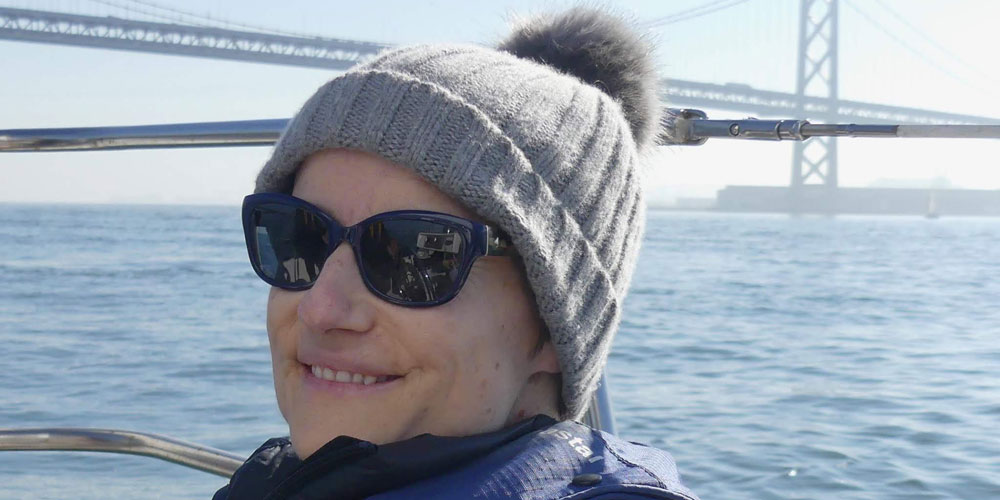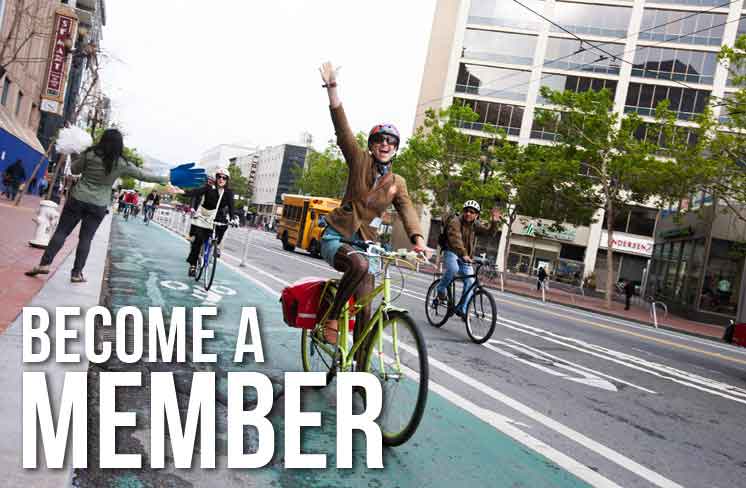In my time at the San Francisco Bicycle Coalition, I’ve been lucky enough to work alongside local advocates like the Senior and Disability Pedestrian Safety Workgroup of the SF Vision Zero Coalition.
Last November, they published Getting to the Curb: A Guide to Building Protected Bike Lanes That Work for Pedestrians. I interviewed workgroup member and SFMTA Board Director, Cristina Rubke, on her role in disability work and how accessibility has been incorporated into the world of transportation advocacy.
K: When we’re talking about mobility for people with disabilities, what information may be surprising for people to learn?
C: Disabilities and accommodations used by people with disabilities are extremely diverse. For example, people sometimes view the needs of cyclists and people with disabilities as divergent or at odds with one another, but there are more commonalities than differences (ramps, obstruction-free paths, slower vehicle speeds, etc.). Also, many cyclists are people with disabilities and just like everyone else, they want to be safe when getting around our city.
K: What does it mean to be a disability advocate and a leader in transportation?
C: It means talking a lot about physical access issues like transit station elevators, surface station stop ramp placement, cut curbs, and lifts on buses. But it also means trying to reconcile the transportation choices available to the general public versus people with disabilities (e.g., rideshare options, bike share, scooter share, commuter shuttles) and advocating for ways that our city can make those choices more equal.
K: How will Getting to the Curb help us create accessible bike lanes for everyone on our streets?
C: Getting to the Curb lays out considerations and design principles that will help planners and engineers create better bike lanes. The report highlights universal design principles like, calling for an inclusive engagement process to build a better bike network. When these concepts are used from the beginning, the hope is that public input can be more streamlined and we won’t have to rework larger project elements later.
K: If you could change one thing about biking in SF right now, what would that be?
C: I would make it more inclusive. I really want adaptive bikes and trikes included in our bike share network so that cycling is available to more people, including people with disabilities and seniors. Normalizing different types of bikes and cyclists and creating a bike network to support them will help with so many of our city goals.
Download your copy of Getting to the Curb: A Guide to Building Protected Bike Lanes That Work for Pedestrians by visiting walksf.org.
Editor’s Note: This article was originally published in the winter issue of our quarterly Tube Times magazine, one of many perks of membership at the San Francisco Bicycle Coalition. Not a member? Join today.


